The public education sector stands at a critical crossroad, with the convergence of stalled academic recovery, structural imbalances, and increased politicization. At the DMG Summit held in February, we explored these challenges and how leaders can navigate them for a better student future.
This report is an essential analysis of the key challenges confronting the public education sector. It is a timely and critical read for anyone invested in the future of U.S. education.
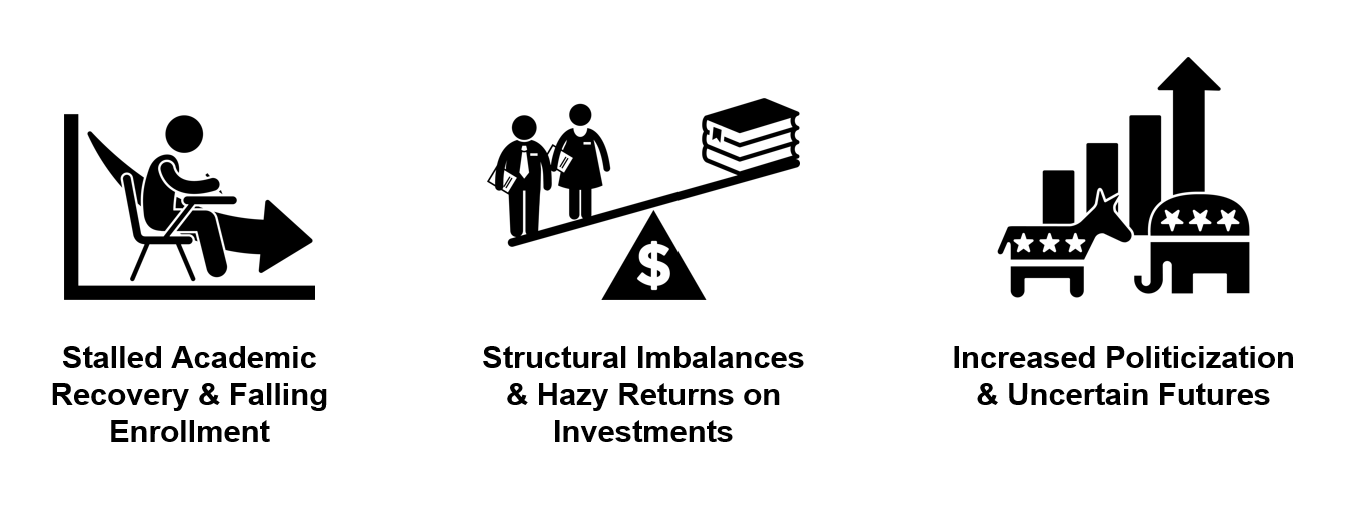
Stalled Academic Recovery
Despite the large infusion of funding and tremendous post-pandemic work of so many educators and staff, the unfortunate truth is that academic recovery has stalled after the initial gains achieved in 2022–23, with math and early literacy still below pre-pandemic levels.
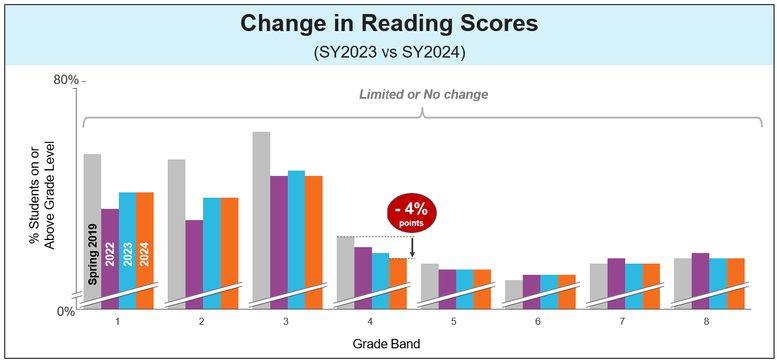
Source: The State of Student Learning in 2024, Curriculum Associates (August 2024) Link * Historical Spring includes the averages for Spring 2019
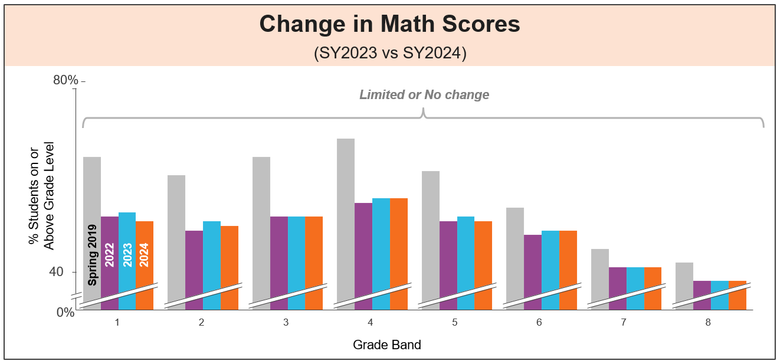
Source: The State of Student Learning in 2024, Curriculum Associates (August 2024) Link * Historical Spring includes the averages for Spring 2019
Inequities in student outcomes persist across race, ethnicity, and income, with higher-income families faring better but still not fully recovering.

Source: The State of Student Learning in 2024, Curriculum Associates (August 2024) Link * Historical Spring includes the averages for Spring 2019
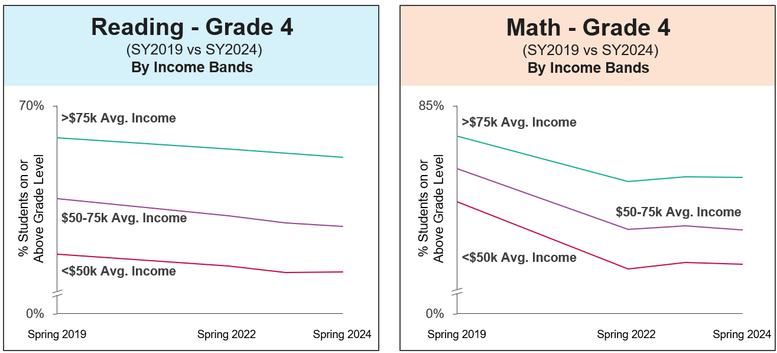
Source: The State of Student Learning in 2024, Curriculum Associates (August 2024) Link * Historical Spring includes the averages for Spring 2019
2024 NAEP eighth-grade math scores have fallen back to levels achieved in 2000, erasing 13 years of work that included No Child Left Behind and Race to the Top.
Raising student outcomes is particularly challenging, with leaders citing the following key barriers:
Increased Chronic Absenteeism: Chronic absenteeism remains nearly double pre-pandemic levels, with 25% of students missing 10%+ of school days. Reducing absenteeism is critical: research says that reducing absences by 10 days adds 13 days of reading and 18 days of math learning. Top drivers of absenteeism include declining value parents perceive on in-person attendance, low student motivation, teachers feeling unsure how to combat it, and safety concerns.

Source: Nat Malkus, American Enterprise Institute via New York Times (March 29, 2024) – Link . *Chronic absenteeism is defined as missing 10 percent of a school year.
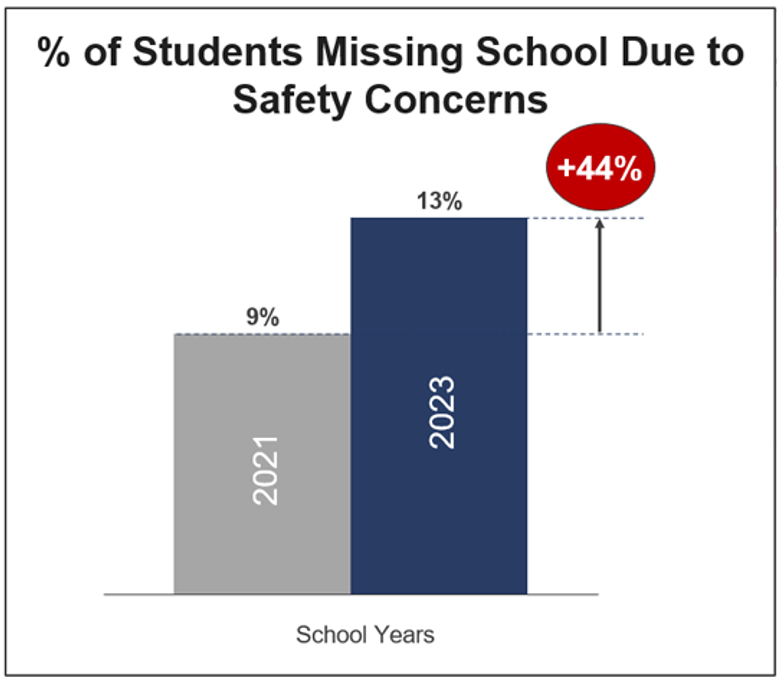
Source: Youth Risk Behavior Survey: Data Summary & Trends Report 2013-2023, CDC (2024) - Link
Student Mental Health Challenges: Teen mental health has been declining for years, with many teens feeling persistently sad or hopeless. Investments in mental health have helped, but challenges remain.
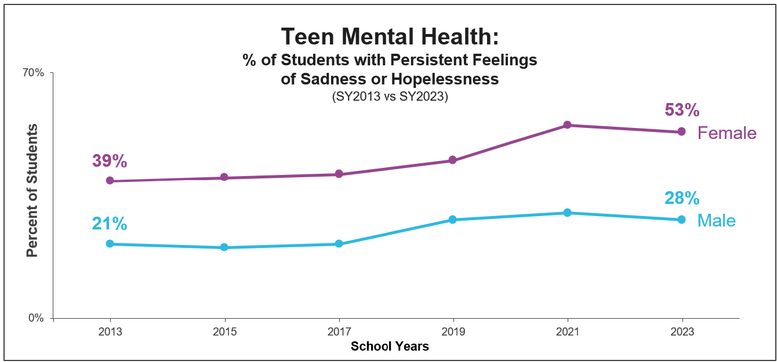
Source: Youth Risk Behavior Survey: Data Summary & Trends Report 2013-2023, CDC (2024) - Link
Student misbehavior: Teachers report increased student misbehavior, which undercuts learning in the classroom.
Structural Imbalances
The sector also faces fundamental structural imbalances, which need to be recognized and addressed.
Declining Enrollment: Public schools face declining enrollment, down 2 million since 2019, with losses expected to continue. While demographics play a role, post-pandemic dissatisfaction has driven families to alternatives like homeschooling, charters, and private schools. Since 2012, 96% of states have seen public school market share decline.
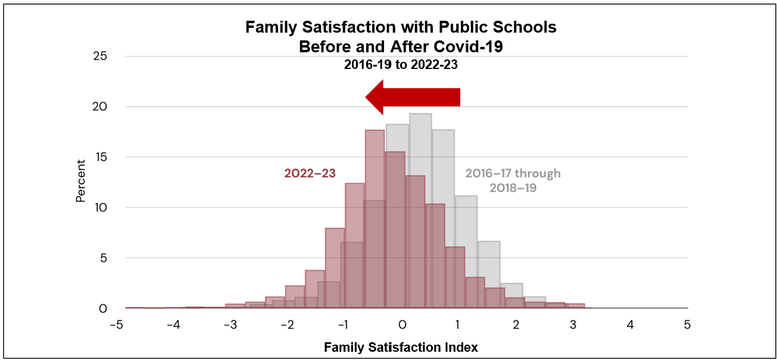
Source: The Hamilton Project (May 2024) - Link
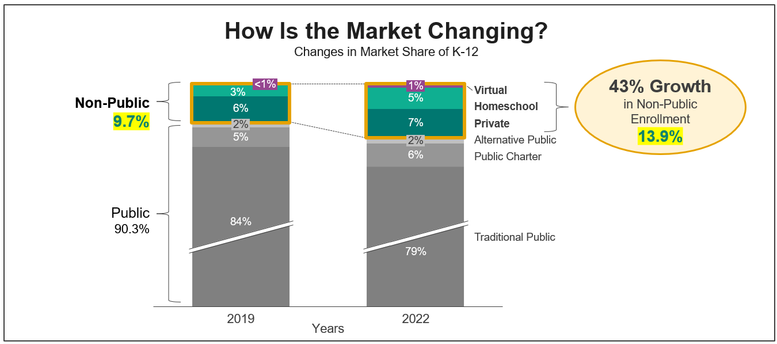
Source: Declining school enrollment since the pandemic, The Brookings Institute, Oct. 2023 (Link) Link #2
Increased Staffing: Public school staffing is at record highs, especially in non-teaching roles, yet half of leaders feel understaffed. Filling essential roles such as special education teachers, mental health professionals, academic interventionists, and classroom aides remains a challenge.
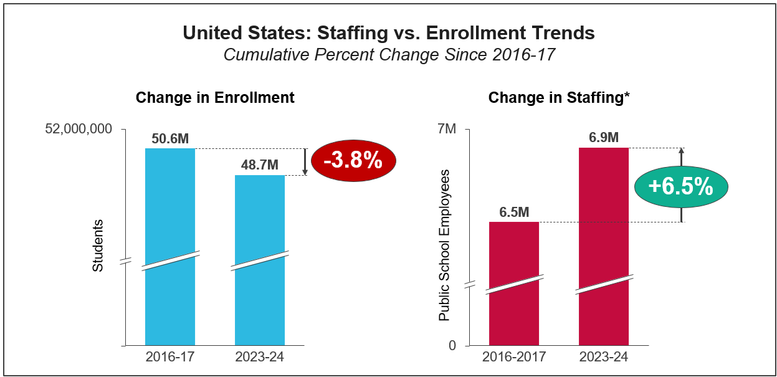
Source: National Center for Education Statistics, Common Core of Data (2025) – Enrollment & Staffing - (*Note: Staffing analysis excludes Utah)
Education Spending: Education spending has outpaced inflation over the last 20 years, mainly funding staffing increases.
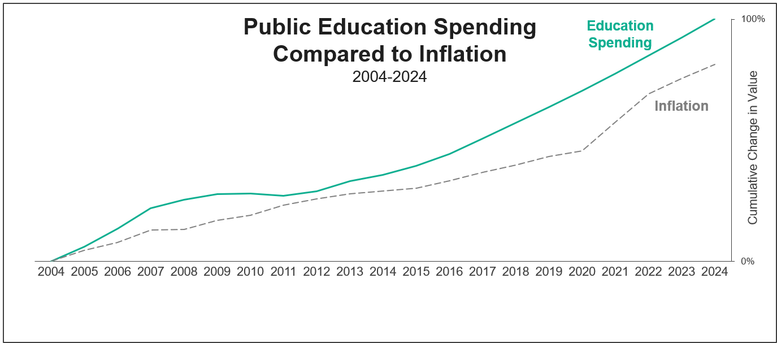
Source: NCES, CPI, Nation’s Report Card (2025); Adapted from Edunomics Lab analysis
Teacher salaries, adjusted for inflation, have remained stagnant for decades.
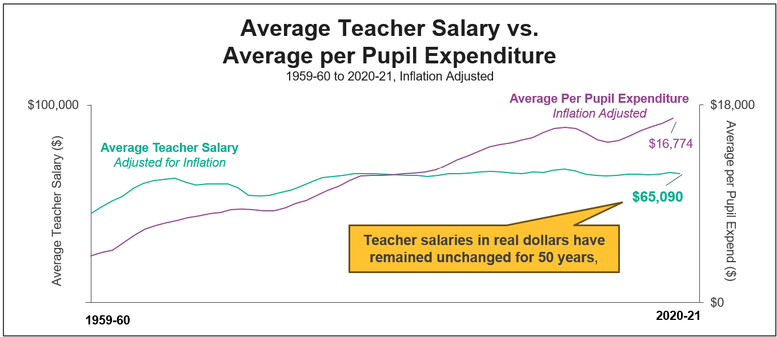
Source: National Center for Education Statistics (2024) - Link
Teachers report lower job satisfaction than other U.S. workers, citing pay as a key concern. Drivers of teacher satisfaction include relationships with colleagues and administrators, freedom over curriculum, and access to resources.
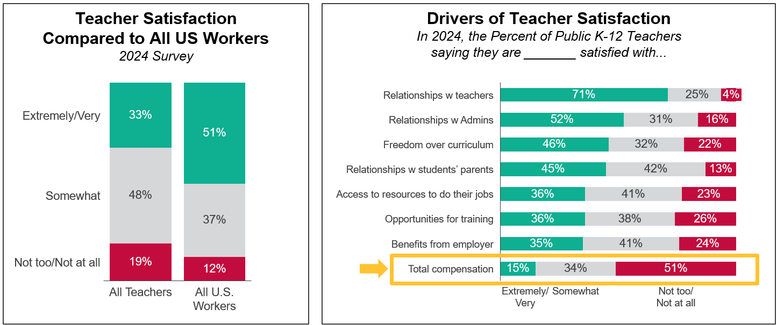
Source: Pew Research Center (March 2024) – Link - In 2024, the Percent of Public K-12 Teachers and U.S. Workers reporting that, overall, they are _____ satisfied with their job
Increased Politicization & Uncertain Futures
Recent political changes have far-reaching implications for public schools, with directives to change curriculum and programs. Policy focus on immigration may significantly affect schools' daily attendance and district financial situations, as 23% of students are coming from immigrant-headed households. School choice options continue to accelerate nationwide, potentially emboldening school voucher advocates.
Individual states and communities maintain control over their schools, but the federal government leverages its funding to influence policy and potentially reduce resources for programs and services.
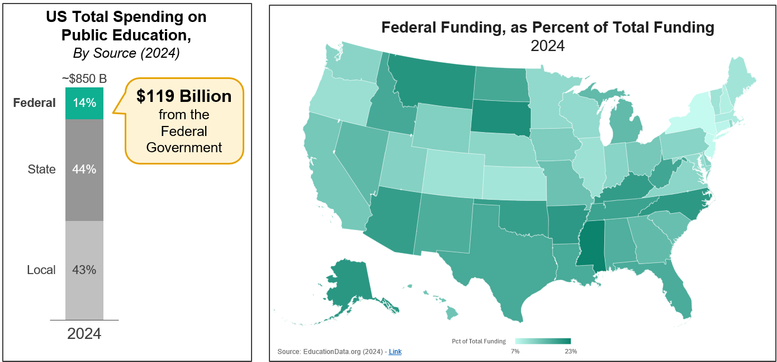
Source: EducationData.org (2024) - Link
A Way Forward
What is next for public K-12 education, and what kind of leadership is required to thrive in this rapidly evolving landscape?
At the DMG Summit 2025, we delved into these critical questions, emphasizing the urgent need for innovation within the education sector. Our discussions explored different models for innovation and highlighted the essential role of forward-thinking leadership in navigating these complexities. If you want to explore how to lead change in your school district and discuss specific improvement ideas, contact us today to discuss your unique challenges and how we can work together.


